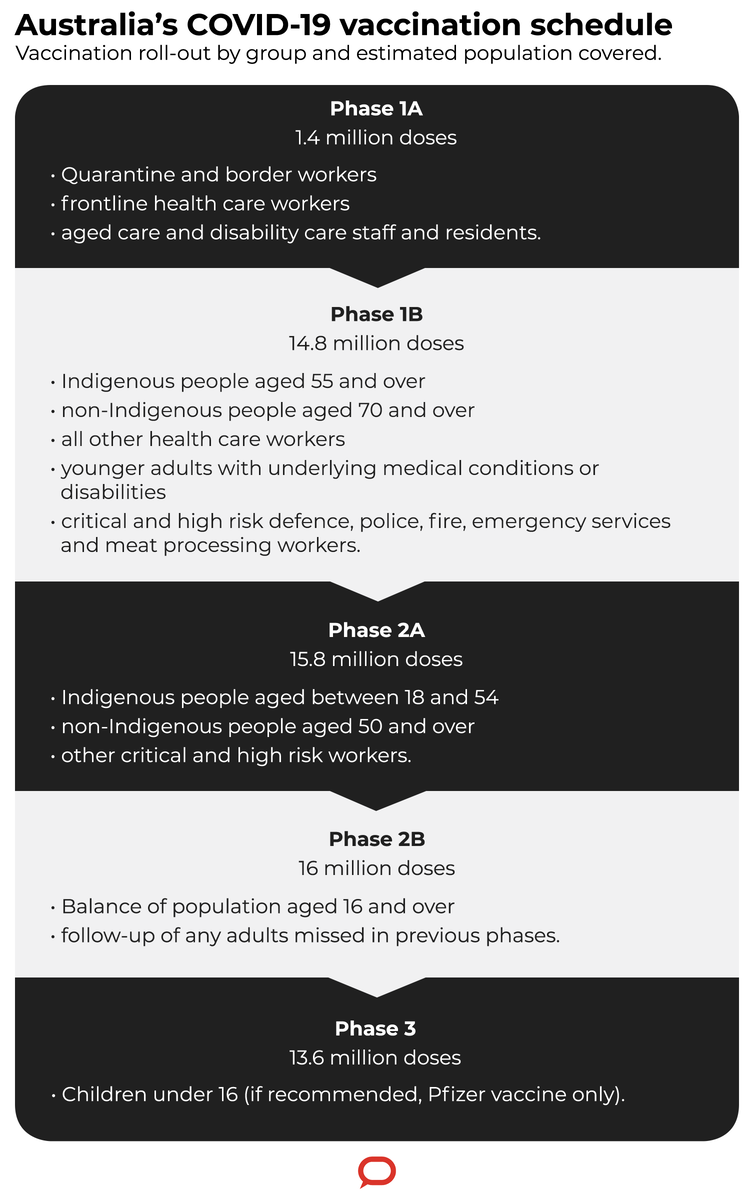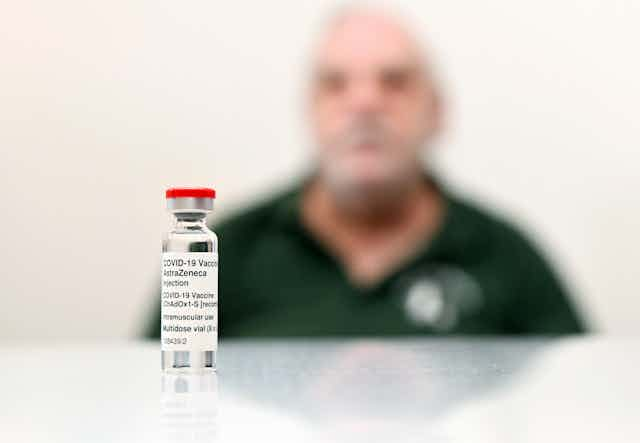Phase 1B of Australia’s COVID-19 vaccine rollout has started today, after a few teething troubles.
Last week the federal government prematurely released the national online booking system, which went live before GPs were expecting it. Practices have been swamped with phone calls since, despite many having not yet received any supply of COVID vaccines.
What’s more, extreme weather and flooding is expected to disrupt the rollout in New South Wales.
But from today, about 1,000 GP clinics have received supply and can begin vaccinating eligible Australians.
Just over six million Australians are eligible to be vaccinated in this phase. This includes Aboriginal people over 55 years old, non-Aboriginal people over 70, key workers such as police and firefighters, and health-care workers not vaccinated in phase 1A. You can take the federal government’s online test to find out whether you’re eligible, and if not, when you will be.
Check the ‘booking system’ for eligible GPs
General practices are using only the Oxford-AstraZeneca vaccine as part of this phase. Pfizer vaccines will continue to be given through workplaces and aged-care facilities, to those in category Category 1A. There is no plan for these to be given through GPs at this stage.
To administer the Oxford-AstraZeneca vaccine, GPs undergo a rigorous application process, and not all practices have opted to do this. Of the roughly 6,600 accredited practices in Australia, only around two-thirds will be administering COVID vaccines. The federal government hopes up to 4,000 clinics will be administering the vaccine by the end of April.
You can find out which GP closest to you is giving these through the national online booking system. However, despite being called a “booking system”, it actually simply gives you contact details for approved GPs in your location. You are then expected to make contact yourself. You can find the “make a booking” button after doing the eligibility quiz.
But before you pick up the phone, please understand…
Each participating GP clinic is currently allocated a limited supply of AstraZeneca vaccines, around 50-400 per week. It will likely take months at this rate to vaccinate communities. Unfortunately, there just isn’t enough supply of the AstraZeneca vaccine in the country right now to do this any faster.
Currently we only have what we’ve imported, which is around 700,000 doses, despite the hope for 3.8 million by now.
However, local manufacturing will soon ramp up. On Sunday the Therapeutic Goods Administration (TGA) approved the domestically produced version of the AstraZeneca vaccine, which is being manufactured by Melbourne-based biotech company CSL.
It’s exactly the same vaccine, but it required TGA approval to make sure the locally produced version exactly matches the European one. Federal Health Minister Greg Hunt said he expected CSL to start delivering the vaccine in the coming days. The aim is for CSL to eventually produce one million doses per week.
One positive aspect to this slow start is that it allows GPs to absorb vaccine administration into their normal workflow. Most general practices are small, privately owned businesses that want to continue providing existing services as well as give the vaccinations. So there’s time to get systems and processes in place.
The overarching message is to see this as a marathon not a sprint. Be patient, and your time will come!

You don’t need any extra GP appointments before you have the vaccine
The good news is you can be given your COVID vaccine by any GP clinic approved to give them, as long as you’re eligible under the rollout plan. Even if the GP giving the COVID vaccine isn’t your usual GP, you don’t need to see them for a separate consultation beforehand.
Before you’re given a COVID vaccine you also need to consent to it, verbally or in writing. A standard consent form lists medical conditions and risks you should consider, and is available in multiple languages. Many practices will email this in advance, have it on their website, and/or have hard copies on-site.
If you realise you have questions or concerns while reading the consent form, instead of booking to have the vaccine you should book for an appointment to discuss these with a GP, either your own or the one whose practice will be giving you the vaccine. Note that many vaccines will be given by immunisation nurses, with GPs on-site at all times too. A useful blog to help you get ready for the vaccine, written by GPs, can be found here.
Once you’re eligible, you can book with a GP that has a supply. It would be best to check their website before calling them to see their preferred methods of booking. Please help them by following their suggestions. And please be patient with the receptionists trying to juggle this increased workload!

